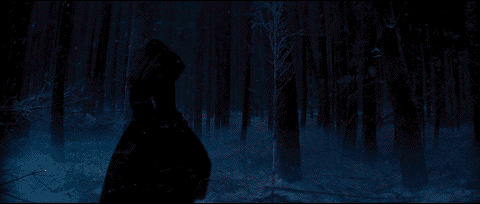Every Frame a Painting
A video about how Jackie Chan directs his action scenes led me to the youtube channel of Tony Zhou called “Every Frame a Painting” which I can highly recommend. In each of his short but well-presented videos he dissects a specific directing or editing technique.
Here’s one about what makes Edgar Wright’s comedies (Shaun of the Dead, Scott Pilgrim vs the World) funny on a purely visual level. Hating on mainstream Hollywood is always fun so Zhou contrasts it with comedy movies like Hangover (which make a shitload of money anyways so remember the central life lesson of cinema: success doesn’t depend on mastering movies as an art form and one should stop lamenting this fact lest one becomes a grumpy old film critic).
Check out his other videos on youtube or tumblr. I also recommend the one about Snow Piercer (since I’ve worked on it – the movie’s vfx that is, not this video).
Pop Culture at the Speed of Light
The new Star Wars Teaser made most people happy just by containing scenery that looked like the original trilogy.
Not even two days later there’s a pretty well-composited spoof of a “George Lucas special edition” that reminds you of how cluttered Episode 1 to 3 looked like:
And the only thing that was actually new in that teaser? A ridiculous light saber design reminiscent of a medieval sword (interesting trivia: in German, the light saber had always been called a “laser sword”). And of course, mere days after the trailer, this gets its own spoof as well…

source: unknown
I love the evolution of pop culture in the internet age 🙂
16th Century Portraits
Super heroes, villains and Star Wars characters in 16th century style portraits including period costumes by photographer Sacha Goldberger.
The casting is also really great (unless there was some photoshopping involved to match the original actors that closely) and whole bunch people worked on the costumes (credits on facebook).
Reconciling Job and Family
Reconciling a job in the media or vfx industry with a family can be a tough task. I hope more companies follow the lead of Canadian ad agency Union. Once a year, on employee appreciation day, their employees are rewarded for their hard work by being allowed to see their families 🙂
(found via pixelsham)
Ok, that’s a joke. Obviously. But it coincides with another blog post from vfxsoldier about an article in ‘Variety’ where the frustration about the working conditions at MPC boils over in the comments section. The title of that article? Moving Picture Co. Finds Valuing Artists is the Best Effect.
Disclaimer: personally, I can’t judge any of this since I have never worked at MPC nor in the UK for that matter.
The Great Martian War
Man, World War 1 was apparently greater (and more awesome) than I’ve been told in school.
The video above, which seems to be a compilation from a mockumentary on History Channel, is so funny it makes you forget the horrors of WW1 as shown in that real documentary on ARTE (IMDB page – unfortunately there doesn’t seem to be much info in English).
The shot of horses grazing in front of broken Martian machinery reminds me of the art of Simon Stålenhag.
Star Wars Without Music
With all the focus on vfx and pretty visuals you often forget about the importance of music and the trickery that is done with sound effects and sound mixing. Here’s a great clip that re-creates what the final ceremony in the original Star Wars must have sounded like to its participants. No, not the Ewok party. That one:
Check out the Auralnauts channel for more great dubs and movie spoofs. I recommend this fake director’s commentary for After Earth as well as a spoof of Star Wars Episode 2 where Anakin is friendzoned by Padme. It sports dubbed and lip-synced scenes by good voice actors and some original music.
bonus video: Red Letter Media’s take on why the romance of Anakin and Padme in Star Wars is an example of pretty bad screen writing…
MinutePhysics Explains Star Shapes
Most lens flares, especially artificial ones in VFX, have a star-shaped thingy around bright light sources. And every comp software has its own tool for this, whether it’s called glint, glare, highlight and so forth. This video explains the physics behind these star shapes and the correct chromatic aberration if you fake them (spoilers: red is diffracted the most).
With the knowledge from this video, you can make your own star-shaped diffraction patterns using a fourier transformation. Nuke has a tool for this.
